Stepping into Père Lachaise Cemetery in Paris, you kind of feel like you’ve crossed into another world. The winding stone paths and old trees create a peaceful setting that just begs you to slow down and look around.
If you care about history, art, or music, a walk here is a must. Legends like Oscar Wilde, Jim Morrison, and Edith Piaf rest here, and their presence draws in everyone from casual tourists to die-hard fans.
When I visited, I set out on a personal quest to find these famous graves tucked among thousands. It turned into something deeper than sightseeing. Every stop felt like a story, and the quiet beauty of the place really pulled me in.
As I wandered, I picked up some tips for navigating the maze-like layout. A little patience goes a long way when you’re searching for these well-known tombs.
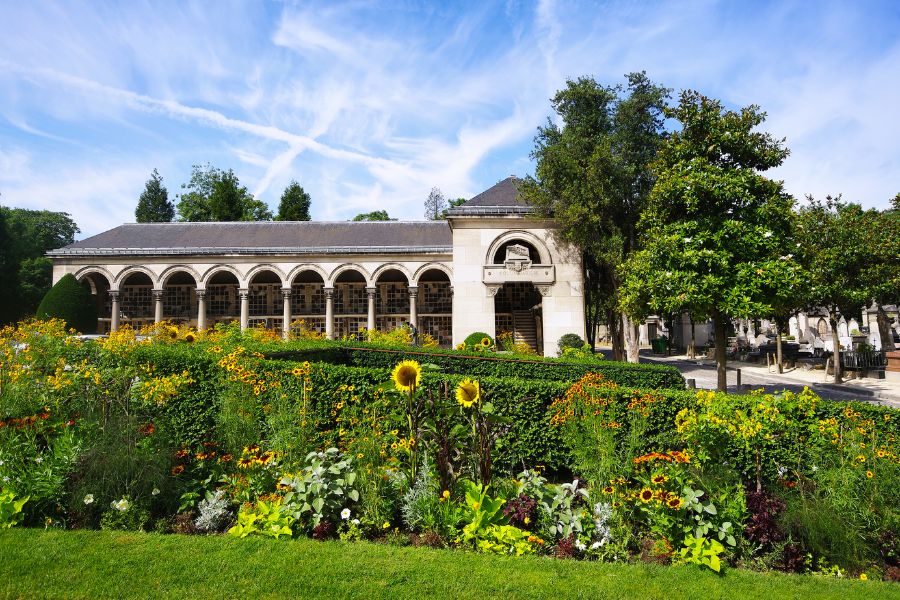
If you’re in Paris for the first time, or just want a break from the usual sights, walking through Père Lachaise offers a peaceful escape from the city’s constant buzz. The atmosphere here is this mix of history, art, and the lives of extraordinary people. I’d say it’s one of the most memorable experiences you can have in the city.
Why Père Lachaise Cemetery Captivates Travelers
When I walked through Père Lachaise, I realized it’s so much more than a famous burial ground. The place weaves together history, art, and stories in a way that feels both grand and oddly personal.
Each pathway led me to unexpected details and iconic names. You never really know what you’ll find around the next corner.
A Storied Burial Ground in the Heart of Paris
Père Lachaise is Paris’s largest cemetery. It stretches over 110 acres and holds thousands of graves.
The walkways twist through a patchwork of tombstones, some so old the names have worn away. It honestly feels like stepping back into history.
The cemetery opened in 1804. Since then, it’s become the final resting place for many well-known figures.
Local legends and real stories blend together here. As I wandered, I noticed every plot has its own sense of memory and tradition.
Unlike modern cemeteries, Père Lachaise mixes writers, musicians, artists, and everyday Parisians. I paused at humble stones and ornate mausoleums alike.
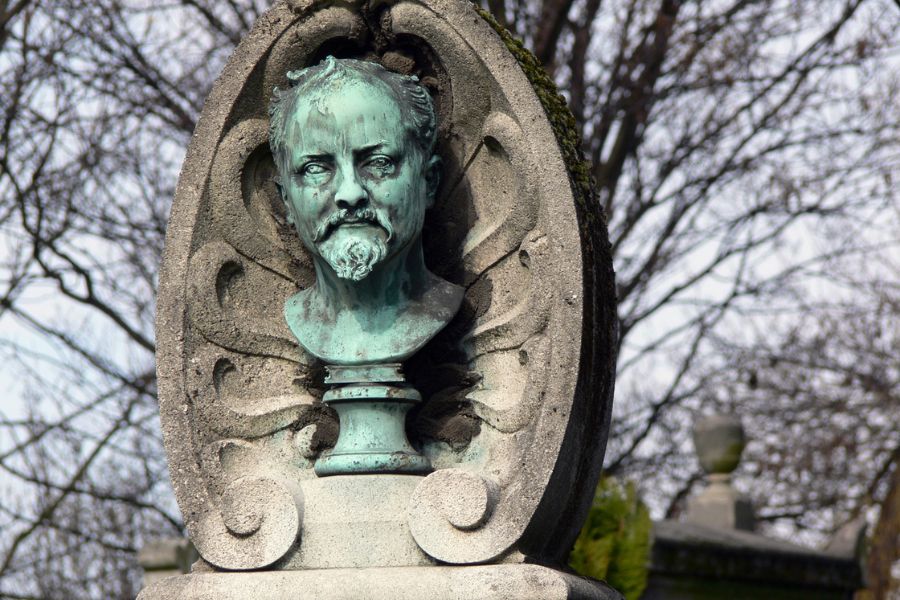
It’s the combination of the famous and the forgotten that gives this place its depth.
Legends, Architecture, and Sculptures
The art here really hit me right away. Many graves are covered in ornate sculptures and carvings.
Statues of angels, famous busts, and elaborate Gothic tombs line the paths. Some details are delicate flowers in stone, others are life-sized mourning figures.
The mausoleums range from simple to extravagant. Some look like tiny houses or chapels.
Others, like Abelard and Héloïse’s monument, stand out for their romance and beauty. Walking among these sculptures feels like drifting through an outdoor museum.
A lot of these artistic touches are deeply personal. Visitors leave love letters and poems at certain graves, creating a moving connection between those who rest here and those who come to remember them.
I kept stopping, picking out small details, and just soaking it all in.
Pilgrimage to Celebrity Graves
The hunt for celebrity graves is a big draw for travelers—and honestly, for me too. Some people come just to see where icons like Oscar Wilde and Jim Morrison are buried.
Their graves are easy to spot, usually covered with notes, lipstick marks, or flowers.
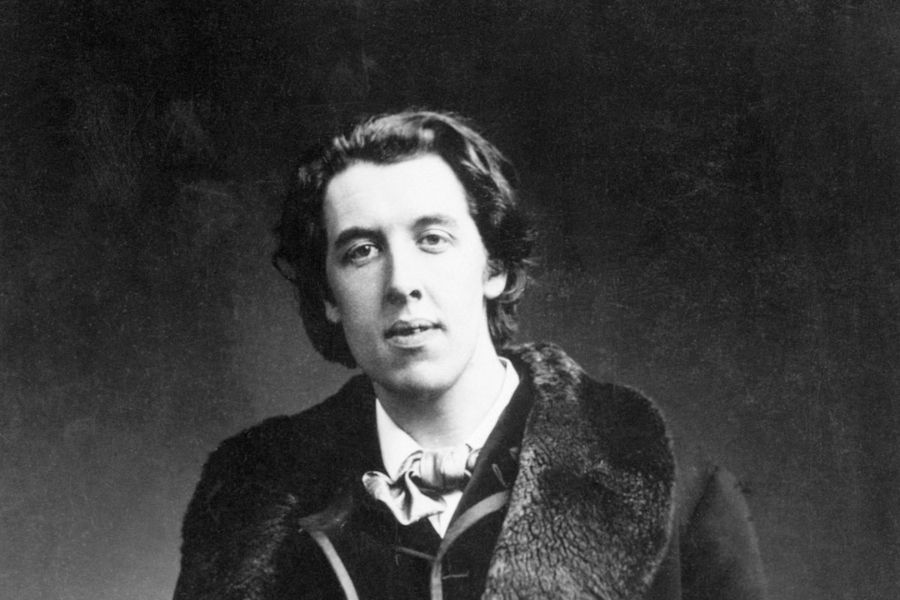
Here’s a quick table of some notable burials I found:
| Name | Notable For | Style of Grave |
|---|---|---|
| Oscar Wilde | Writer | Modern, colorful marker |
| Jim Morrison | Singer | Simple, well-worn stone |
| Edith Piaf | Singer | Modest family plot |
| Marcel Proust | Novelist | Unadorned, classic style |
Standing by these graves, I felt a sense of shared experience. It’s a tribute, but it’s also a way to feel close to people who shaped art, literature, and music.
For a lot of travelers, finding these spots is like finishing a personal pilgrimage.
I also stumbled across less-famous graves along the way. The journey matters as much as each destination.
Every turn in Père Lachaise brings a new discovery, so “grave hunting” here turns into an adventure right in the heart of Paris.
Planning My Atmospheric Walking Tour
Planning a visit to Père Lachaise Cemetery takes a mix of curiosity, a dash of research, and some practical planning.
With a self-guided route, an interactive map, and a few travel tips, exploring this iconic Parisian landmark becomes much easier—and honestly, more fun.
Designing a Self-Guided Route
Before I set out, I made a shortlist of must-see graves: Oscar Wilde, Jim Morrison, Edith Piaf, and Chopin. I grouped these famous sites by area, so I could walk in a logical order and avoid a lot of pointless zig-zagging across the cemetery.
I paid attention to entry points, since some gates are closer to certain graves. Looking up lesser-known artists and writers buried here added a bit of extra discovery to my walk.
Having a flexible plan let me take spontaneous detours—sometimes I’d just follow a path that looked interesting and end up at a hidden sculpture or a peaceful corner.
Using an Interactive Map
I used an interactive map from the cemetery’s official website. This map showed not just celebrity tombs, but also pathways, mausoleums, and key landmarks.
Swiping through my phone, I could look up the exact location of each grave. That kept me from getting lost—these paths really do feel like a maze.
The map let me filter by category, like “artists,” “musicians,” or “writers.” For someone into European culture, this made it easy to tailor my walk and spot famous names along the way.
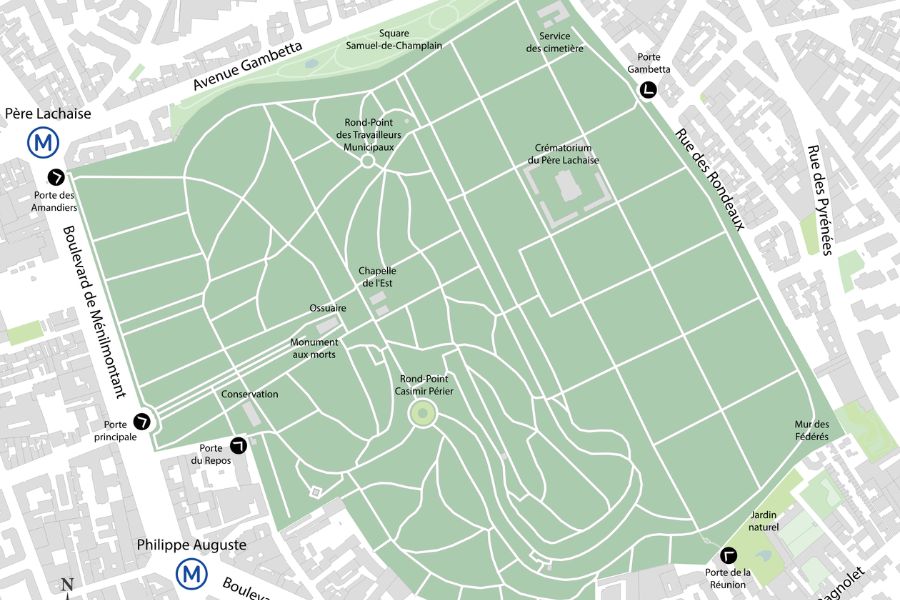
Printed maps from the entrance work too, but having a digital version made it so much easier to adjust my route on the fly.
Insider Travel Tips for Exploring
Wear sturdy shoes. The cobblestones and uneven ground can be tough on your feet after a while.
Bring water, especially if you’re there in the warmer months. There aren’t many places to buy snacks or drinks inside.
I started early to beat the crowds and enjoy the morning quiet. The light is softer in the morning, which makes for better photos.
If you want to join a guided tour, booking ahead is smart—especially for tours focused on artists and writers.
I always checked for restroom locations near the main entrances. That’s a small thing, but on a long walk, it matters.
Keep an eye on cemetery opening and closing times—the gates shut right on schedule. For a reflective, unhurried stroll, I’d say set aside at least two hours.
Must-Visit Famous Graves and Their Stories
Wandering through Père Lachaise is like taking a walk through art, music, and history all at once. Every grave tells a different story, marked by both quiet respect and the bright traces left by fans.
Oscar Wilde: Artistry and Adoration
Oscar Wilde’s tomb is easy to spot thanks to its bold modernist sculpture. Jacob Epstein crafted it, and now it draws in art lovers and literature fans alike.
Visitors leave lipstick kisses, notes, and flowers—even though a glass barrier now protects the stone.
Wilde died in Paris in 1900, exiled for his controversial life and work. I lingered there, reading the engraved line, “A kiss may ruin a human life.” It just made the moment more powerful somehow.
People still find creative ways to honor him, even with rules against graffiti. The tomb’s mix of reverence and rebellion just feels right for Wilde.
Jim Morrison: The Doors of Legacy
Jim Morrison’s grave draws music lovers from everywhere. Tucked among crowded headstones, his tombstone is simple but always decorated with flowers, notes, and candles.
Fans from all over the world come here, drawn by the mystique of The Doors’ frontman.
I watched people quietly pay their respects, some humming his songs under their breath. Security keeps an eye on things after past vandalism, so everyone acts with care.
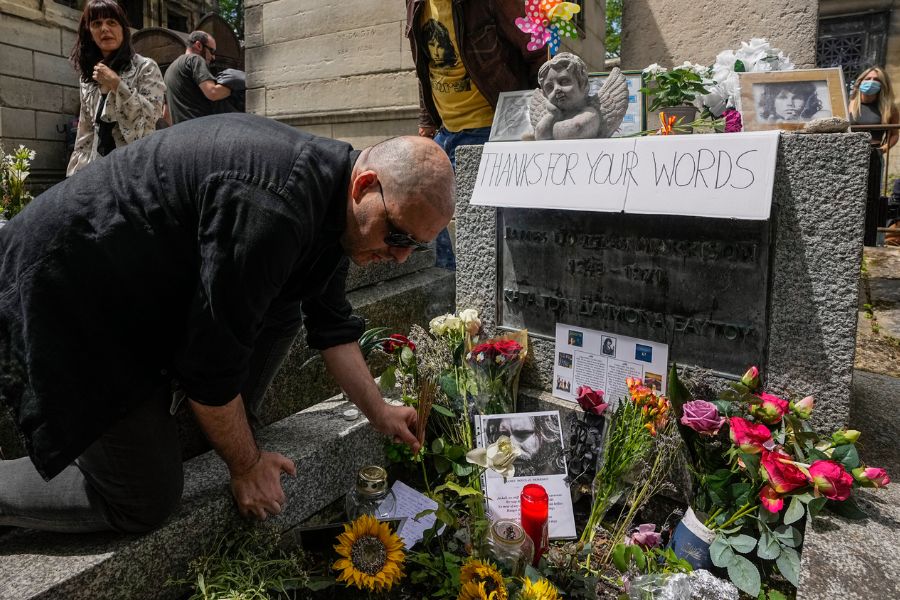
A small bust of Morrison used to sit on the grave, but someone stole it years ago. Now, just the understated stone marker remains, along with the energy left behind by decades of devoted fans.
Chopin: Notes That Echo Through Time
Frédéric Chopin’s tomb is a gathering place for music lovers. His grave features a beautiful statue of Euterpe, the muse of music, weeping over a broken lyre.
Flowers often blanket Chopin’s grave, left by admirers who come to honor the Polish composer and pianist.
He was born in Poland but lived in France, dying in 1849. Chopin’s heart, by his own wish, rests in Warsaw, but his story is deeply tied to Paris.
Standing by his grave, I could almost imagine his nocturnes lingering in the air. The quiet of the cemetery feels like a gentle tribute to his music.
Edith Piaf and Other Iconic Figures
Edith Piaf’s grave is simple and modest, marked by her name and the words: “Love Conquers All.” Fans leave red roses, notes, and sometimes tiny music boxes that play her greatest hits.
Her life—full of hardship, love, and triumph—still stands out in Parisian memory. I saw visitors of all ages at her tomb, some playing “La Vie en Rose” from their phones.
Nearby, you’ll find other iconic graves, like those of Balzac and Modigliani. Each site becomes a meeting point between history and the present, where stories and inspirations come alive again.
Exploring Hidden Corners and Lesser-Known Tombs
Père Lachaise isn’t just about icons like Jim Morrison or Oscar Wilde. Its winding cobblestone paths hide quiet stories, from poetic geniuses to opera legends, and peaceful gardens dotted with striking monuments.
Marcel Proust: The Quiet Power of Memory
Finding Marcel Proust’s grave felt like stumbling on a hidden chapter in a favorite book. His tomb sits tucked under leafy trees, marked by a simple black stone with just his name.
Fans sometimes leave pens, notes, or flowers.
Proust wrote In Search of Lost Time, and many come here to reflect on memory and time, just like he did in his novels. The setting is peaceful—a gentle spot to pause and remember how words can shape our lives.

What struck me was how quiet it was, even though Proust is world-famous in literary circles. It felt like only those who really know his work make the extra journey here.
Molière and Maria Callas: Legends Beyond the Main Paths
I left the main avenues, following a hand-drawn map, and found the tomb of Molière, the great French playwright. His grave stands near Jean de La Fontaine’s, making a sort of meeting place for classic French literature.
Drama lovers visit, but it’s usually much less crowded than the rock star graves.
Not far away, hidden from the busiest paths, is Maria Callas’s tomb. The legendary soprano’s resting place is elegant but understated.
Fans sometimes leave lilies or photos beside her grave, honoring her voice. It’s moving to see that decades later, visitors from all over the world still come for a quiet moment at her side.
Both sites reminded me that even the most famous artists can end up with peaceful, almost intimate memorials here.
Secret Gardens and Unique Monuments
When I wandered through the quieter corners of Père Lachaise, I found hidden gardens full of wildflowers and moss-covered statues. Some of these spots didn’t even have signs, and honestly, I got happily lost in the maze of winding paths.
I ran into some unusual monuments that barely anyone seems to notice or photograph. There are tombs shaped like little chapels, and a few have stained glass or even colorful mosaics.
One modern sculpture, all bold lines and sharp edges, really caught my attention next to the older, more traditional graves.

What did I love most? Slowing down and searching for these details. If you go, maybe bring a map—but don’t stress if you lose your way. Sometimes the best discoveries hide far from the main paths.
Practical Guide for Your Visit to Père Lachaise Cemetery
If you plan a trip to Père Lachaise, a little prep goes a long way. Figuring out how to get there, the best times to visit, and a few simple etiquette tips made my walk through Paris’s most famous cemetery much more enjoyable.
Getting There and Entry Essentials
Père Lachaise Cemetery sits in the 20th arrondissement of Paris. The closest Metro stops are Philippe Auguste (Line 2) and Père Lachaise (Lines 2 and 3).
I got off at Philippe Auguste, which is just a few steps from the main entrance.
Entry won’t cost you anything. The cemetery opens every day, but hours change depending on the season.
Usually, they open the gates around 8:00 AM and close by 6:00 PM. I checked the times online before heading over, just in case.
There’s no official dress code, but I skipped shorts out of respect for the place.
Grab a detailed map—trust me, you’ll want one if you’re looking for Jim Morrison’s or Oscar Wilde’s graves, or just hoping to stumble on something unexpected. Sometimes you’ll find maps at the entrance, and you can always download one before your visit.
Best Times to Walk and What to Bring
I liked visiting early in the morning when everything felt quiet. Weekdays are less crowded, and the peaceful paths let me linger and read names on the old stones.
Paris weather can turn on you fast, so I always toss a light rain jacket or umbrella in my bag. Good walking shoes are non-negotiable—those cobblestone paths are no joke, and I ended up walking way more than I planned.
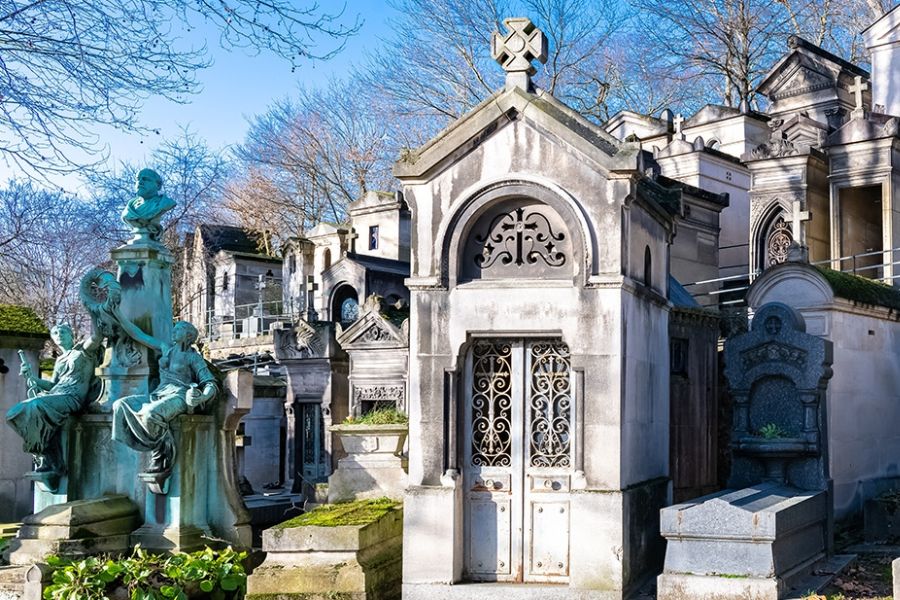
A small camera or a fully charged phone is handy for snapping details on the famous graves or the tree-shaded lanes. Since you can’t buy food or drinks inside, I picked up a water bottle and a sandwich beforehand and made sure to take my trash with me.
Respect and Etiquette among Graves
As I wandered among the old tombs, I felt this quiet sense of respect. Some people come for the celebrity graves, but families still visit to remember loved ones.
I kept my voice down, skipped playing music, and stepped aside when I saw funeral processions.
Certain graves—like Oscar Wilde’s—now have protective panels because of past vandalism. I made sure to keep my distance and only took photos when it seemed okay.
I never climbed on or touched the monuments. If I wanted to show respect, I’d leave a flower or a small stone. Food, wine bottles, or graffiti? That’s really not cool.
When I wasn’t sure how to act, I just watched what the locals did. Parisians treat their cemeteries as peaceful public spaces, not just tourist stops.
Nearby Paris Landmarks for the Complete Experience
After I wandered through Père Lachaise, I realized how easy it was to hop over to other Paris sights. Montmartre sits just a short Metro ride away, with its famous Sacré-Cœur and those winding, artsy streets.
You can also reach the Notre Dame Cathedral and the Île de la Cité right in the heart of Paris. Just grab Metro Line 1 or 2, then make a quick transfer—honestly, it’s pretty simple.
If you’ve got a little extra time, I’d say try walking along the Seine toward the Eiffel Tower. Or you could head over to the Arc de Triomphe if you’re feeling up for it.
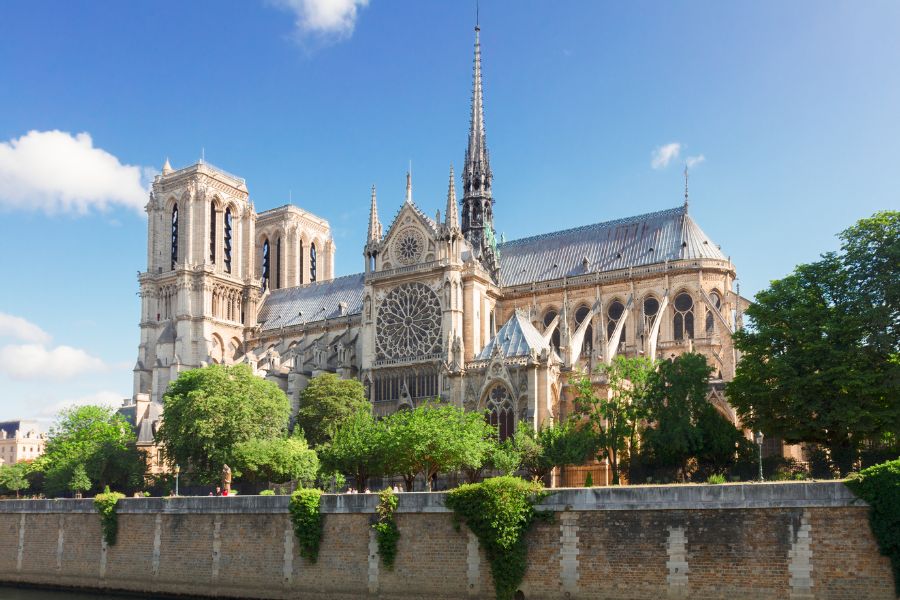
Both spots give you a totally different vibe from the quiet of the cemetery. I actually mapped out my route in advance so I could squeeze in snacks and breaks without feeling rushed.
Linking up these visits made my day in Paris feel way more memorable. It’s a nice way to get the most out of your trip, you know?

